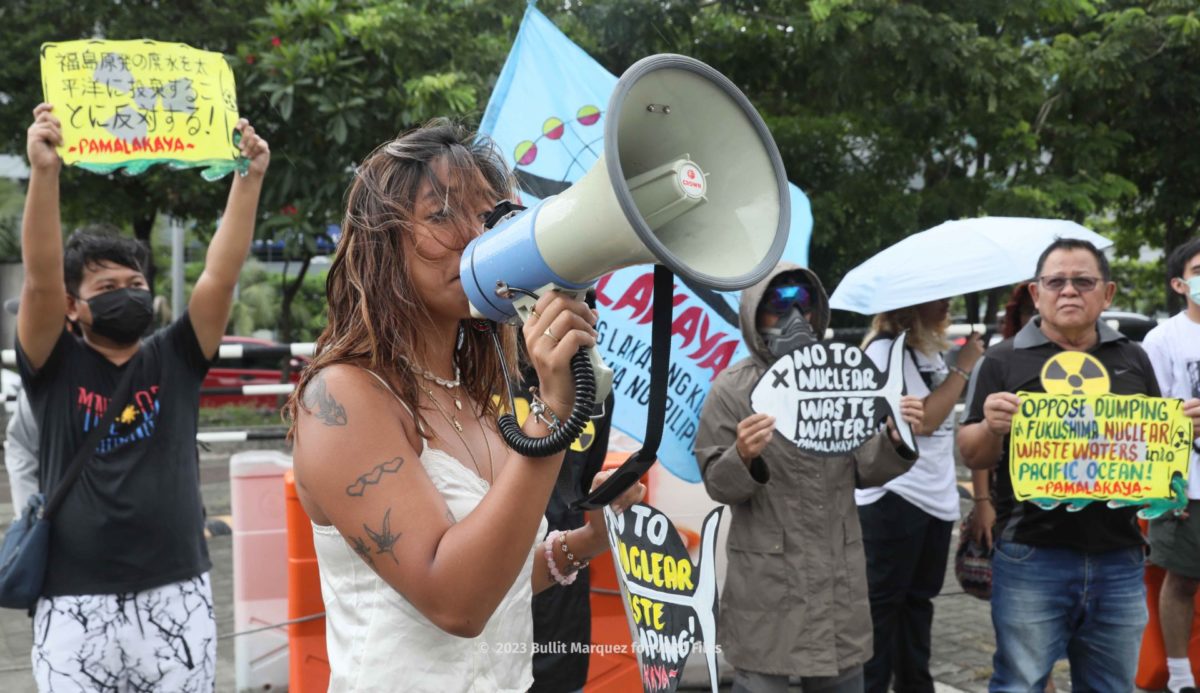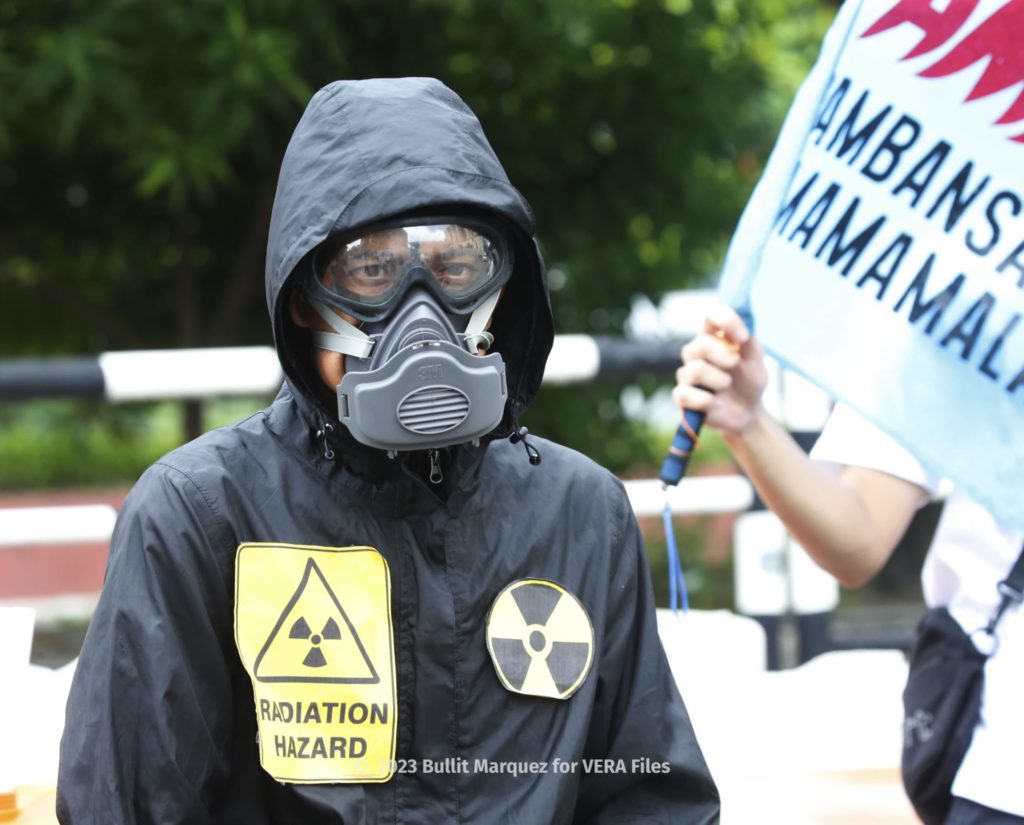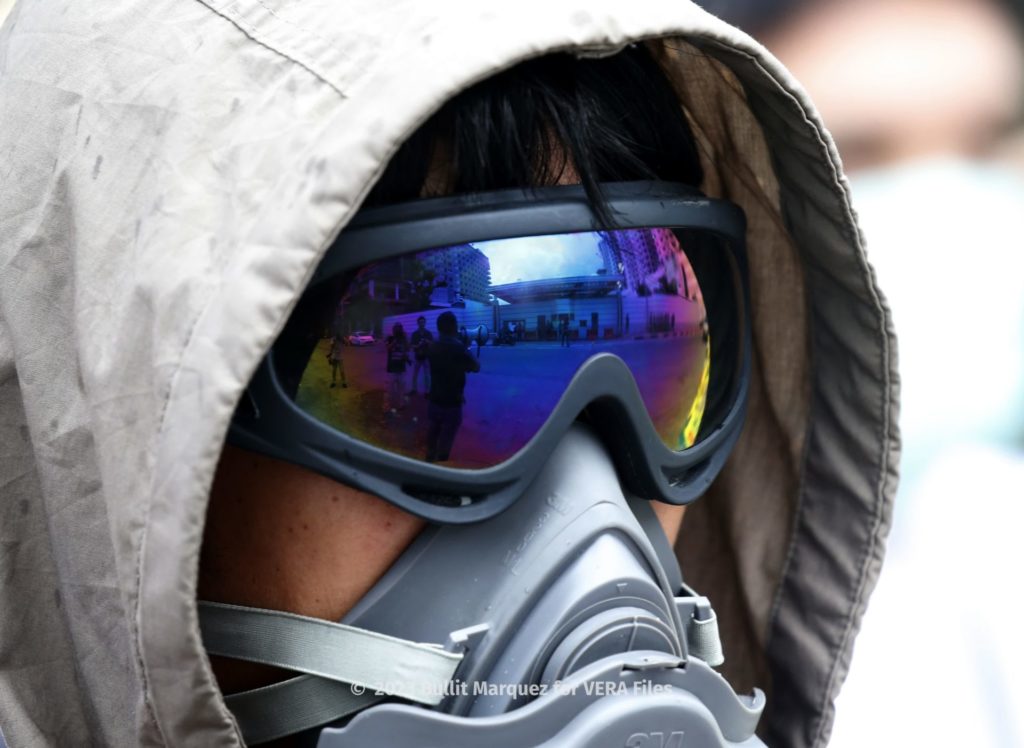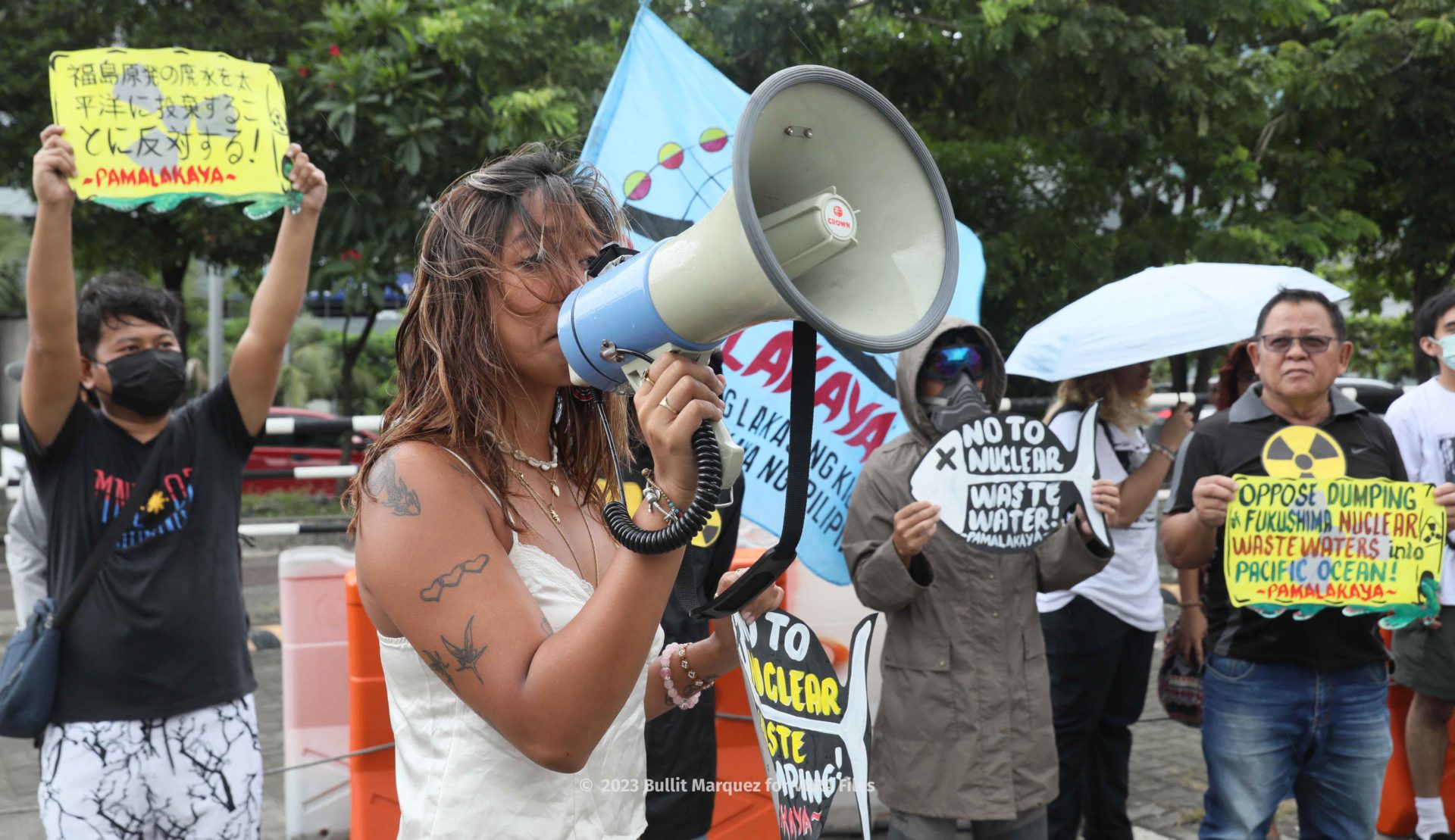
Fishermen belonging to the Pambansang Lakas ng Kilusang Mamamalakaya ng Pilipinas (PAMALAKAYA) and environment advocates rallied in front of the Japanese Embassy in Manila on Aug. 26 to protest the release of treated radioactive water from the Fukushima Daiichi nuclear power plant into the Pacific Ocean.
The protesters fear the waste water, which allegedly still contains high level of toxic chemicals, will eventually reach Philippine waters and compromise the health of Filipinos.
South Koreans have also staged protest actions against Japan’s actions which the United Nation’s nuclear watchdog, the International Atomic Energy Agency says the discharge will have a negligible radiological impact to people and the environment.
China has banned import of all aquatic products from Japan.
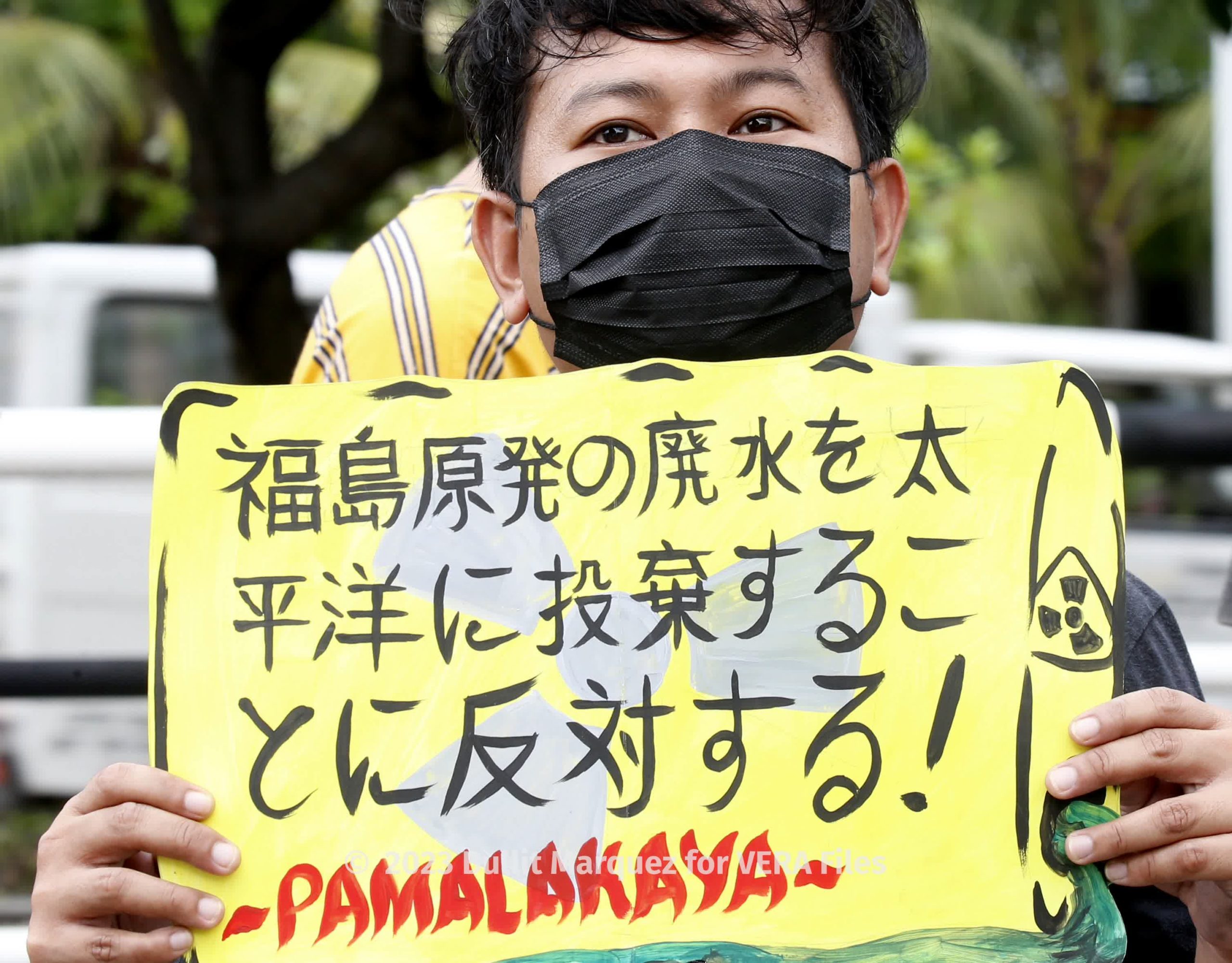
The Philippine government is not objecting saying, it “continues to look at this issue from a science- and fact-based perspective and its impact on the waters in the region. As a coastal and archipelagic state, the Philippines attaches utmost priority to the protection and preservation of the marine environment.”
A nuclear accident happened at the Daiichi Nuclear Power Plant in Ōkuma, Fukushima, Japan on March 11, 2011 after a powerful earthquake and tsunami hit the area.
An explainer by the National Public radio on the controversial release of nuclear waste water said, “After the 2011 Tohoku earthquake and tsunami, several reactors melted down at the Fukushima Daiichi nuclear power plant. To avert further disaster, workers flooded the reactors with water, and that water quickly became highly contaminated. The plant is now offline and the reactors are defunct, but they still need to be cooled, which is why wastewater continues to accumulate. In the years since the accident, groundwater has also filtered into the site, and some of it has become contaminated as well.
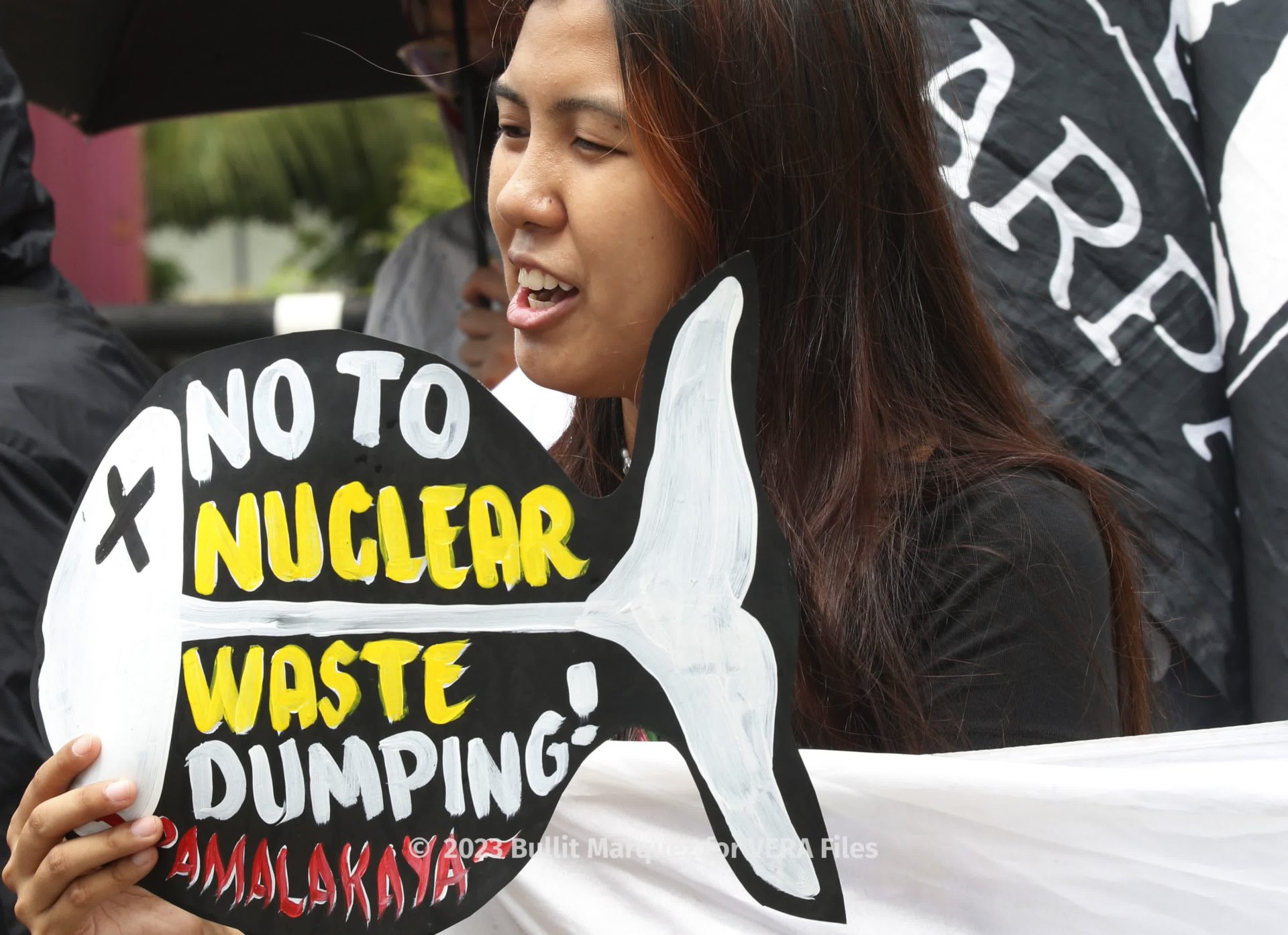
“Currently, some 350 million gallons are being stored in more than 1,000 tanks on-site, according to Japanese authorities. The tanks are nearing capacity and the site can’t fit any more, so some of the water needs to be released, according to the government.
“The government has been working on a complex filtration system that removes most of the radioactive isotopes from the water.”
-Photos by Bullit Marquez for VERA Files
